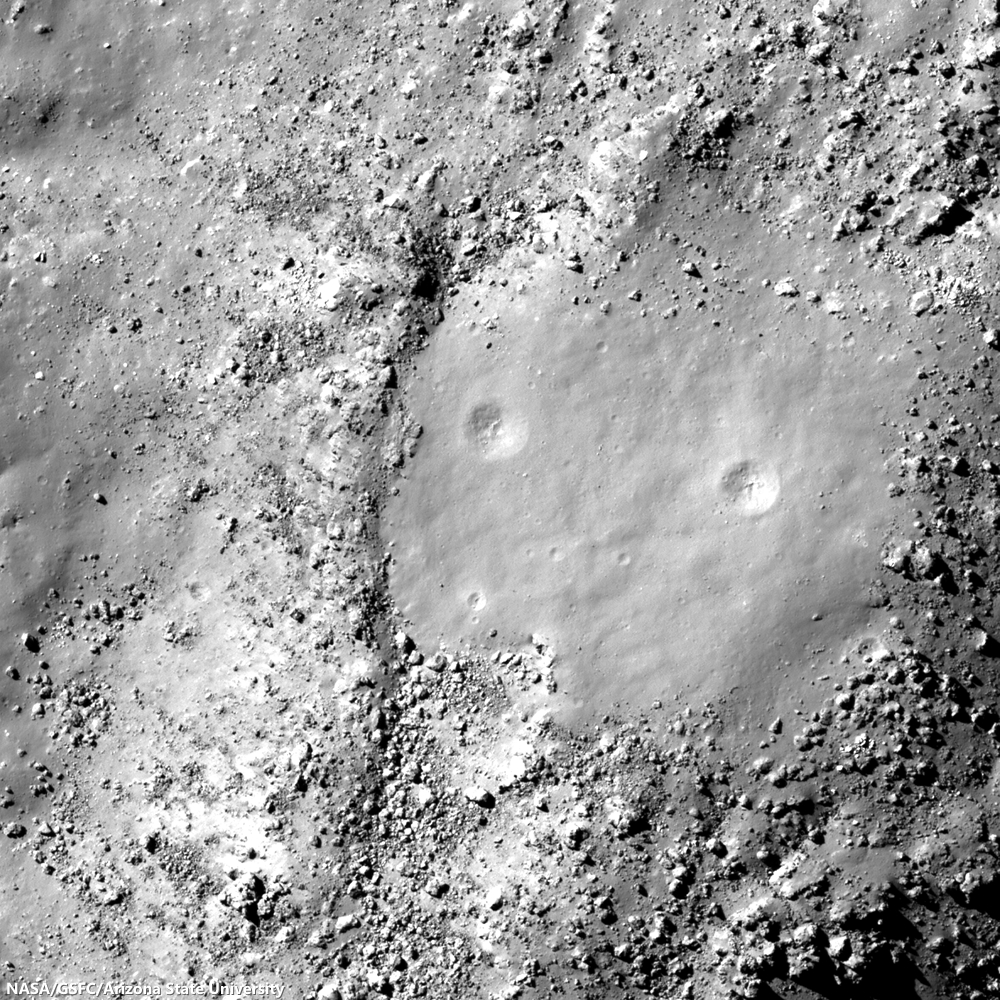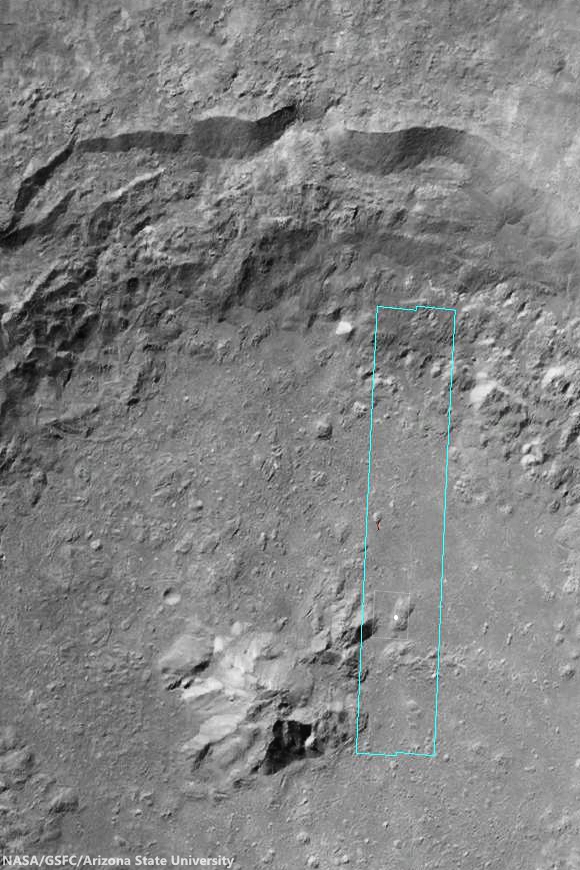 |
| Mound littered with boulders on the floor of Tycho features a rare clearing, in the midst of the general rubble, of relatively low slope. The mound, east of the landmark nearside crater's spectacular central peaks, likely formed from squeezed up impact melt. LROC NAC observation M1144856403R, LRO orbit 20751, January 20, 2014, field of view 730 meters wide; illumination incidence angle 57.92° at 72 cm per pixel resolution from 59.2 km [NASA/GSFC/Arizona State University]. |
Raquel Nuno
LROC News System
Tycho is one of the most spectacular craters on the Moon. If you've never done so, next time you get access to a pair of binoculars and the Moon is near full, look at the Moon's southern hemisphere: you will see a very bright crater with spectacular rays emanating from it. That's Tycho!
It formed when an asteroid (or comet), going at roughly 20 km/s, hurled into the Moon around 109 million years ago. That age may seem old to you and me, but by lunar standards, that's young.
We think we sampled impact melt that originated from Tycho at the Apollo 17 landing site, but we can also tell it's young just by looking at it: it has a crisp morphology and its rays are seen as high reflectance streaks. With time, exposure to the space environment will fade the rays and erode the crater's sharp features into smooth curves.
sculpts the floor of many lunar impact craters.
melt squeeze ups in the full resolution NAC? Hint: look along the floor fractures, HERE.
Related Posts:
Fractured melt rock on Jackson's terraced wall (October 22, 2013)
Melted Moon (July 31, 2013)
Landing Site at Tycho North (Science Concept 7) (March 20, 2013)
Rippled Pond on Tycho's Wall (September 13, 2012)
Breached Levee at Tycho (September 11, 2012)
America's last unmanned lunar lander (September 7, 2012)
LROC News System
Tycho is one of the most spectacular craters on the Moon. If you've never done so, next time you get access to a pair of binoculars and the Moon is near full, look at the Moon's southern hemisphere: you will see a very bright crater with spectacular rays emanating from it. That's Tycho!
It formed when an asteroid (or comet), going at roughly 20 km/s, hurled into the Moon around 109 million years ago. That age may seem old to you and me, but by lunar standards, that's young.
We think we sampled impact melt that originated from Tycho at the Apollo 17 landing site, but we can also tell it's young just by looking at it: it has a crisp morphology and its rays are seen as high reflectance streaks. With time, exposure to the space environment will fade the rays and erode the crater's sharp features into smooth curves.
sculpts the floor of many lunar impact craters.
melt squeeze ups in the full resolution NAC? Hint: look along the floor fractures, HERE.
Related Posts:
Fractured melt rock on Jackson's terraced wall (October 22, 2013)
Melted Moon (July 31, 2013)
Landing Site at Tycho North (Science Concept 7) (March 20, 2013)
Rippled Pond on Tycho's Wall (September 13, 2012)
Breached Levee at Tycho (September 11, 2012)
America's last unmanned lunar lander (September 7, 2012)
Giant Flow of Impact Melt (August 14, 2012)
River of Rock (June 20, 2012)
View from the Other Side (May 21, 2012)
Impact Melt Fingers (May 8, 2012)
Melt on a Rim (May 3, 2012)
Jackson's Complexity (January 20, 2012)
Tycho's flash-frozen inferno (November 2, 2011)
Tycho Central Peak Spectacular (July 5, 2011)
Chaotic crater floor in Tycho (June 19, 2011)
Polygonal fractures on Tycho ejecta deposits (June 15, 2011)
Ejecta on slumped wall of Tycho (December 9, 2010)
LOLA's Tycho and the Apollo era (March 27, 2010)
The Floor of Tycho- Constellation Region of Interest (January 15, 2010)
 |
| When the Moon is full, Tycho's bright ray system is among the few lunar features visible to the naked eye. A testimony to its youth, a low degree of steady space weathering when compared to hundreds of similar but older crater,s from before the time when dinosaurs ruled the earth. The "miracle boys of Minsk" (Astronominsk) captured this local late morning image of Tycho, part of a full disk monochrome mosaic, captured from Belarus, September 20, 2010. One of their fabulous color images of Тихо can be viewed HERE Above originally posted to illustrate "Landing Site at Tycho North (Science Concept 7), March 20, 2013 [Astronominsk]. |





No comments:
Post a Comment